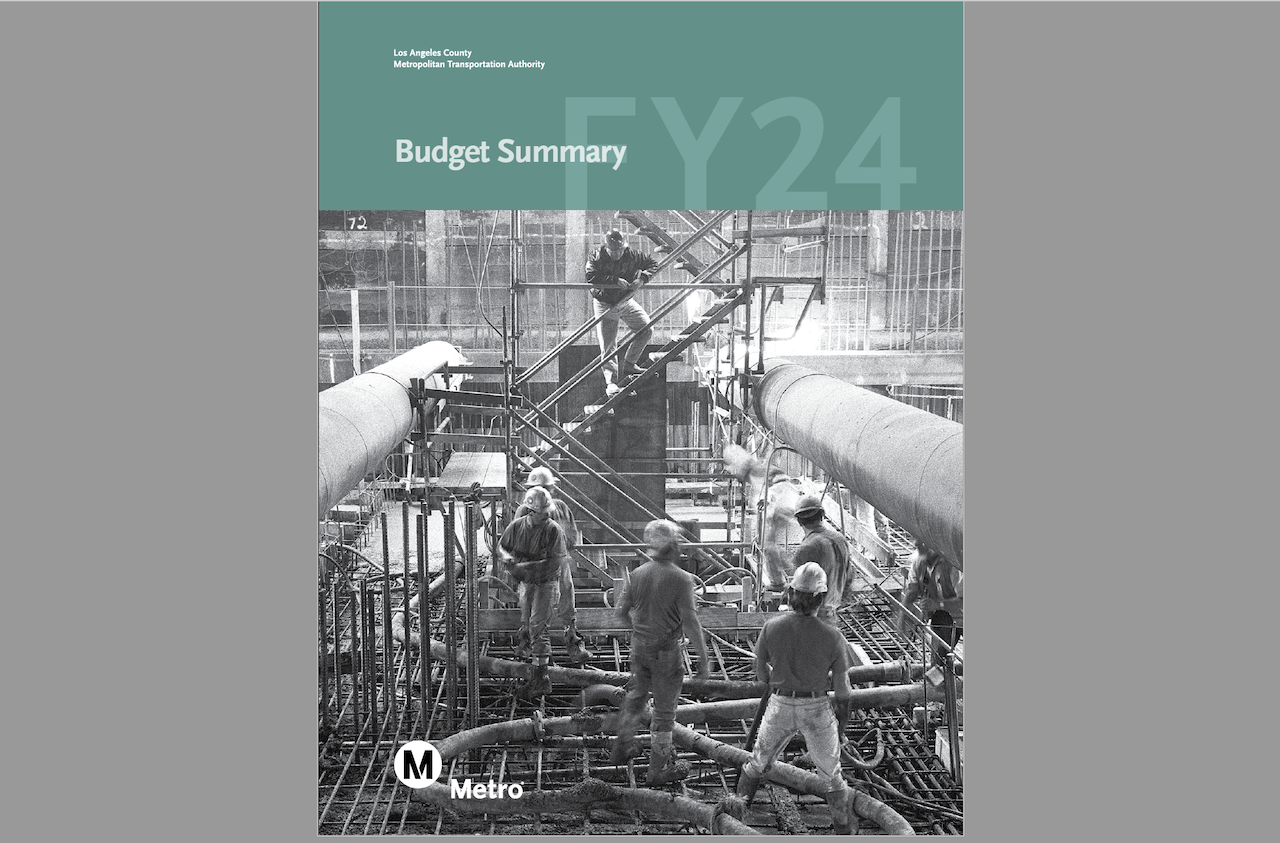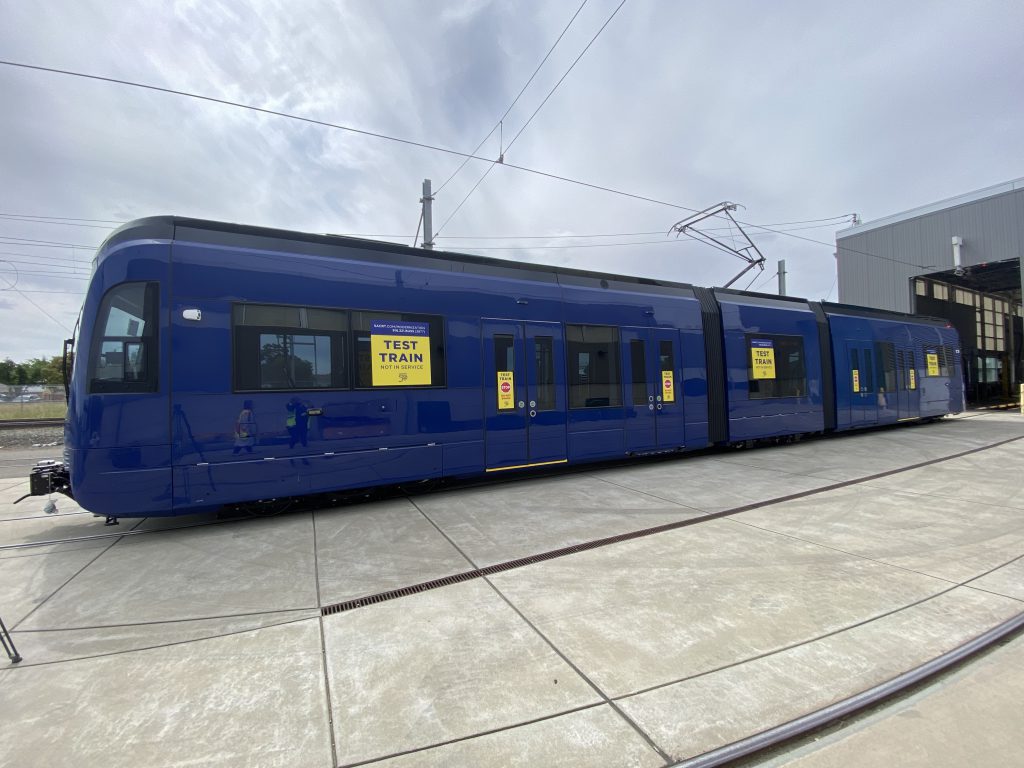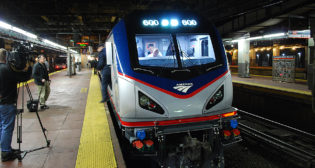
Transit Briefs: LA Metro, VIA Rail, SacRT
Written by Carolina Worrell, Senior Editor
The Los Angeles County Metropolitan Transportation Authority (Metro) releases its proposed 2023-24 $9 billion budget. Also, Leger Study names VIA Rail Canada (VIA Rail) “the most reputable company” in the transportation sector; and the Sacramento Regional Transit District (SacRT) begins testing new low-floor light rail trains on the tracks.
LA Metro
Metro has released its proposed budget for the 2023-24 fiscal year, which runs from July 1 through June 30, 2024.
The proposed $9 billion balanced budget (download below), which was developed with considerable input from the public, reflects the agency’s “commitment to serving customers, stakeholders, residents and efforts to address their top concerns,” including public safety, better and more frequent service, and connecting unhoused riders and riders with mental health issues to the social services they need, Metro said.
The budget will be considered by the Metro Board of Directors this month. Additionally, Metro is holding a public hearing on Wednesday, May 17, at 1:30 p.m. The meeting can be attended in person in the Board Room on the third floor of Metro headquarters adjacent to Union Station. The hearing will also be live-streamed.
Here are some highlights of this year’s budget:
- Public Safety: “To deliver a safer system, we’re implementing a comprehensive, multi-layered strategy that focuses on getting a more visible presence of staff on our system. That means continued funding for contracting law enforcement services, more of our own Transit Security Officers to help ensure compliance with our Code of Conduct and funding for our pilot Metro Ambassador program that officially launched earlier this year.
- Mental Health, Drug Addiction and Unhoused. “The new budget invests more money to improve our response to societal issues that impact our transit system. The proposed budget invests $13.5 million in outreach to unhoused people in partnership with People Assisting the Homeless (PATH) and the Los Angeles County Department of Health Services (DHS). The budget also dedicates $10 million to a new partnership with the Los Angeles County Department of Mental Health Services (DMH), to provide training support to identify mental health concerns and proper responses and Community Mental Health Ambassadors. We also plan to spend another $1.8 million for short-term shelters, workforce partnerships and other strategies to help address these issues on our system.
- Transit service levels. “To help everyone get around, the budget includes $2.4 billion for operations and maintenance of our transit system. That’s a five percent (or $112.7 million) increase over last year’s budget and will provide 8.9 million revenue service hours of bus and rail service and Metro Micro. That’s 9.6 percent higher than our pre-pandemic service levels—and 27.5 percent more rail service than we delivered prior to the pandemic.
- Free and Reduced Fares. “We want to ensure that as many people have access to Metro as possible—and we want to see ridership continue to rise as we recover from the pandemic. The budget funds: our GoPass Pilot Program that provides free fares for K-12 and community college students in Los Angeles County; our Low Income Fare Is Easy (LIFE) program that offers free and heavily discounted fares for our low-income riders; our upcoming Fare Capping program that will simplify our fares and will lower the cost of riding for many riders, and; our Mobility Wallet pilot that is helping reduce transportation expenses for low-income families.
- Cleaning. “We know riders want our system to be cleaner—and that a cleaner system is a safer one. The proposed budget includes $201 million in cleaning efforts, an increase of 13.3% or $23.6 million over the current year’s budget. This investment will enable us to create 10 roving cleaning teams, hire 24 more full-time custodial staff and hire up to 50 temporary part-time custodial staff dedicated to our B (Red) and D (Purple) subway lines. Metro is also increasing the frequency of cleaning — so we can clean buses and trains while they’re in service instead of waiting for them to return to our bus and rail yards.
- New Transit Projects. “With our Regional Connector project poised to open soon, the budget provides funds for the continued construction of several projects including the three sections of the Purple (D Line) Extension, the L (Gold) Line Extension to Pomona and the LAX/Metro Transit Center Station to connect our system and local transit to the airport. The budget also supports upcoming construction of the G (Orange) Line Improvements Project to improve speed and safety on the busway in the San Fernando Valley, as well as pre-construction work for the first section of the East San Fernando Valley Light Rail Project that will build a new rail line along Van Nuys Boulevard between the G Line in Van Nuys and San Fernando Road in Pacoima. We’re also working to install new bus priority lanes and transit signal prioritization to speed up bus service.”
Additionally, Metro’s budget covers all the agency’s resources and expenditures, including funds distributed to cities and the county for their local mobility projects and services (ranging from sidewalk upgrades to muni buses), Metrolink’s regional rail program (including projects to improve capacity) and the agency’s highway multimodal and congestion management program (ExpressLanes, rideshare, Freeway Service Patrol, etc.).
VIA Rail
VIA Rail announced May 3 that it has earned the top place as the most reputable company in the transportation sector, according to Leger’s 2023 Reputation Study, which was conducted among Canadians from all provinces from the period of November 22, 2022, to January 25, 2023.

According to the agency, VIA Rail saw a “significant increase” in the annual study this year, improving its reputation score by four points and bypassing all other transportation companies for the first time since the study was published.
For a second year in a row, VIA Rail also ranked as Canada’s first employer of choice among transportation companies. Canadians surveyed by Leger “recognized VIA Rail’s vision and mission to create a positive workplace culture, and 90% of its customers say that VIA Rail has a good reputation,” the agency said.
“This is a fantastic achievement for VIA Rail and a testament to our hard work in providing high-quality transportation services,” said VIA Rail Chief Employee Experience Officer Mathieu Paquette. “Not only does this honor recognize VIA Rail’s commitment to excellence in the transportation sector, but it also highlights our colleagues’ dedication to providing top-notch customer service.”
“We’ve worked with determination to create a positive workplace culture that promotes personal and professional growth, work-life balance, and a sense of belonging,” continued Mathieu Paquette. “Our focus on employee wellbeing, health and safety, and career development has helped us attract top talent and sets us apart.”
SacRT
SacRT’s new low-floor light rail trains began a rigorous phased testing process on May 3 between the Watt/I-80 and Swanston stations, including testing all electrical functions onboard, braking and propulsion, and operating a minimum of 1,000 miles of pre-revenue service without any major failure.
According to SacRT, at 11 p.m. last night, the first train began dynamic testing, which means different weights are added to the train car to test braking with different loads, to ensure the train is working properly simulating the number of riders onboard. The dynamic testing will take place Monday through Friday on the north area Blue Line between Watt/I-80 and Swanston stations, from 11 p.m. through the end of service each weekday.

SacRT purchased 28 new S700 trains from Siemens Mobility in south with the option to purchase up to 76 new trains. Siemens has already delivered six new low-floor trains with SacRT receiving about two per month over the next few years.
The new low-floor vehicles, SacRT says, will provide easier access at every doorway, a spacious seating design, and large windows for better light and views. They will feature improved accessibility with wider aisles and areas for passengers using mobility devices, including wheelchairs and bicycles. The new low-floor vehicles will also increase overall operational flexibility by providing more access to passengers with disabilities at the platform level instead of having to use the mini-high ramps at the end of the station, the agency added.
According to SacRT, the new trains will start passenger service on the Gold Line, once the station platform modifications are completed, which is expected by summer 2024.



